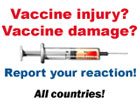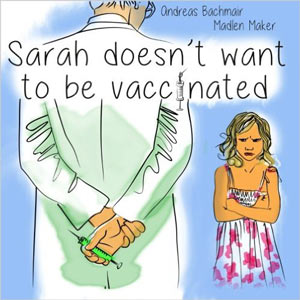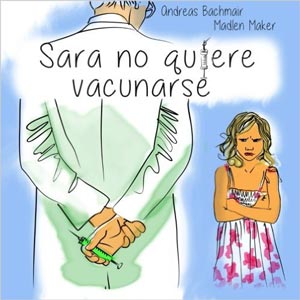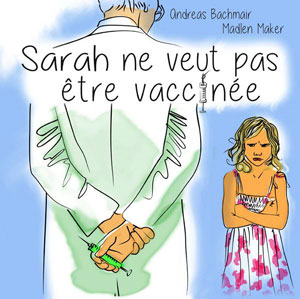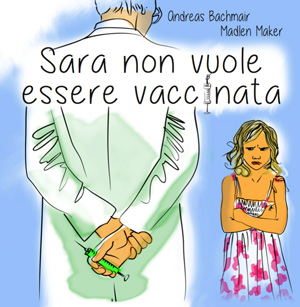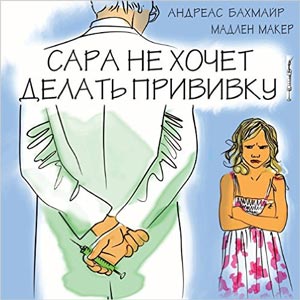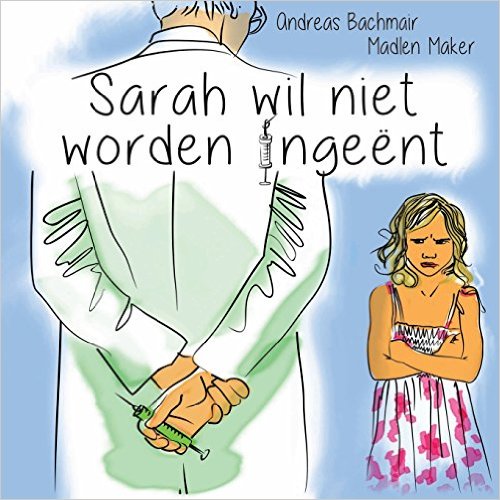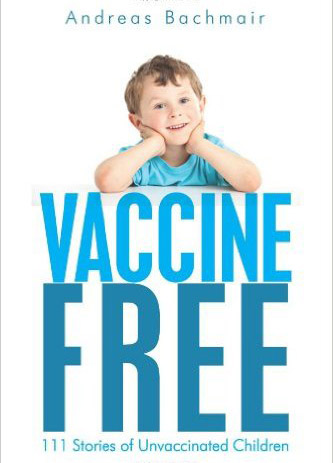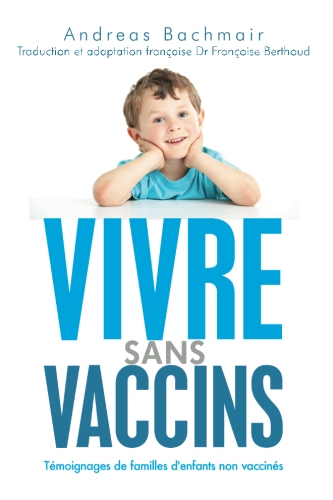Influenza Vaccination, Flu vaccine, Reactions to the flu vaccine
The Flu Vaccine
Influenza viruses are bred on chicken eggs. They also contain Polysorbat or Thiomersal (mercury compounds) of Formalin (varies with manufacturer). There is a great allergic risk resulting from the chicken egg whites in the vaccine serum.
The vaccines are generally trivalent: they contain two strains of influenza A and a strain of influenza B. The WHO defines the composition every year. As a result of the virus characteristics’ ability to change, the vaccines can turn out to be totally useless within six months.
Aside from injected vaccine vaccines are being offered as nasal sprays. But they were taken from the market due to significant side effects. Thus when the vaccine Nasaflu was administered in Switzerland there were up to 50 cases of temporary facial paralysis. The safety of the vaccine is being retested
The nasal sprays are live vaccines whereby people who have been vaccinated are capable to a high degree of infecting their environment. (The package insert of the American nasal spray Flumist says that one should avoid contact with all people whose immune system is weakened. According to the CDC this would include more than 60% of all Americans!)
Vaccine composition 2007/2008
Strain composition of the influenza vaccines for the 2007/2008 season in accordance with the recommendations of the WHO and the recommendations of the European Commission:
- A / Solomon Islands / 3 / 2006 (H1N1)-like virus strain (Reassortante IVR-145, derived from A / Solomon Islands / 3 / 2006)
- ein A / Wisconsin / 67 / 2005 (H3N2)-like virus strain
(Reassortante NYMC-X-161B, derived from A / Wisconsin / 67 / 2005, or Reassortante IVR-142, derived from A / Hiroshima / 52 / 2005, A / Wisconsin / 67 / 2005 –like virus strain) - ein B / Malaysia / 2506 / 2004-ähnlicher Virusstamm
(B / Malaysia / 2506 / 2004)
Vaccine composition 2008/2009
Strain composition of the influenza vaccines for the 2008/2009 season in accordance with the recommendations of the WHO:
- an A/Brisbane/59/2007 (H1N1)-like virus;
- an A/Brisbane/10/2007 (H3N2)-like virus; A/Brisbane/10/2007 is a current southern hemisphere vaccine virus.
- a B/Florida/4/2006-like virus. B/Florida/4/2006 and B/Brisbane/3/2007 (a B/Florida/4/2006-like virus) are current southern hemisphere vaccine viruses.
Vaccine composition 2009/2010
Strain composition of the influenza vaccines for the 2009/2010 season in accordance with the recommendations of the WHO:
- an A/Brisbane/59/2007 (H1N1)-like virus; A/Brisbane/59/2007 is a current vaccine virus; A/South Dakota/6/2007 (an A/Brisbane/59/2007-like virus) is a current vaccine virus used in live attenuated vaccines.
- an A/Brisbane/10/2007 (H3N2)-like virus; A/Brisbane/10/2007 and A/Uruguay/716/2007 (an A/Brisbane/10/2007-like virus) are current vaccine viruses.
- a B/Brisbane/60/2008-like virus.
Vaccine composition 2010/2011
Strain composition of the influenza vaccines for the 2010/2011 season in accordance with the recommendations of the WHO:
- an A/California/7/09 (H1N1)-like virus; A/California/7/09 (H1N1)-like virus is the pandemic (H1N1) 2009 influenza virus. A monovalent vaccine containing this strain was made available to the United States in the fall of 2009.
- an A/Perth /16/2009 (H3N2)-like virus; A/Perth/16/2009 (H3N2)-like virus is a change from the 2009-2010 influenza vaccine formulation.
- a B/Brisbane/60/2008-like virus; B/Brisbane /60/2008-like virus is a current vaccine virus.
Vaccine composition 2011/2012
Strain composition of the influenza vaccines for the 2011/2012 season in accordance with the recommendations of the WHO:
- an A/California/7/09 (H1N1)-like virus; A/California/7/09 (H1N1)-like virus is the pandemic (H1N1) 2009 influenza virus.
- an A/Perth /16/2009 (H3N2)-like virus;
- a B/Brisbane/60/2008-like virus.
The list includes circulating strains (italics) and those strains whose antigens are contained in the new vaccines (bold). They correspond to the recommended strain in their antigen characteristics. A and B refer to the type of virus, the location refers to the location where the virus was isolated; the first digit gives the number of each isolated strain, the second one refers to the year of isolation. H and N refer to the two most important proteins of the virus shell, haemaglutinin and neuraminidase, the following digit refers to the current haemaglutinin and neuraminidase subtype. Reassortants are influenza virus strains which correspond to current wild type viruses but which display particularly good growth characteristics in chicken eggs.
Immunity
What is problematic is the large number of influenza viruses. The vaccination used to cover only one virus type. In the meantime there are vaccines with protection against several influenza types (usually two strains against Influenza A and a strain against Influenza B.
The Center for Disease Control (CDC) maintains that the vaccination protects only approx., 30-40% of people who are older than 65 years. Even children frequently only have a weak reaction to the vaccination which is why it is recommended to have it repeated within 4 weeks.(CDC: Prevention and Control of Influenza-ACIP Recommendations 1997, 46(RR-9): 1-26
The protection only lasts for a relatively short period of time. If the vaccination is more than 3 months in the past, then the vaccination protection is maybe less than 50%. (Mit Tabletten gegen die Virusgrippe: Wer braucht den Neuraminidase-Hemmer? Medical Tribune Bericht )
Furthermore, it is possible to contract a „normal“ case of the flu despite having been vaccinated. The vaccination does not protect from getting sick from a disease which is generally referred to as “flu” but only from influenza.
Between 1999 and 2001 a study involving 786 children was conducted at the Children’s Hospital of Pittsburgh. The one group was given an influenza vaccination; the other group received a placebo. The frequency of influenza cases was 3.6% of the children who had been vaccinated and 3.3% in the children who had received a placebo. 12.9% of the children who had been vaccinated and 9.5% of the children who had received a placebo had to go to the hospital at least once. Furthermore, there were three side effects in the vaccinated group which were serious and which were “possibly” connected to the vaccination. ( Hoberman A., et al, JAMA, 2003, 290: 1608-1616)
The effectiveness of influenza vaccinations was tested in a two-year trial with approx. 1200 participants in a Ford auto plant in the United States. The participants in the trial were examined during two winter seasons (1997-8 und 1998-9), in order to be able to take account of the seasonal variability of influenza virulence and vaccination protection. In this cohort of mainly male employees in the automobile industry the influenza vaccination did not prove to be a cost-effective preventive measure in either a winter with a good concurrence between vaccine viruses and widely spread strains nor in a winter with a bad concurrence between the two. (Effectiveness and Cost-Benefit of influenza vaccination of healthy working adults – a randomized controlled trial. Bridges, C.B. et. al. JAMA 2000; 284:1655-63 ):
|
Result: all respiratory diseases |
Vaccination |
Placebo |
NNT* |
|
Doctors’ visits 1997-8 |
14.6% |
11.2% |
n.s. |
|
Days with pain/problems 1997-8 (pro Person) |
3.7 |
3.2 |
n.s. |
|
Sick days 1997-8 |
10.3% |
9.6% |
n.s. |
|
|
|
|
|
|
Doctors’ visits 1998-9 |
7.0% |
8.4% |
n.s. |
|
Days with pain/problems 1998-9 (pro Person) |
1.7 |
1.9 |
n.s. |
|
Sick days 1998-9 |
9.2% |
11.7% |
40.5, p = 0.047 |
* Positive number: number of people to be vaccinated in order to prevent one day of problems. N.s. = not significant
The book "Influenza" by Lange and Vogel specifies the effectiveness of influenza vaccines in the age group up to 5 years as 13.5% and as 61% in the group up to 10 years of age.
Benefit of influenza vaccines for seniors is overrated
"The benefit of influenza vaccines for seniors is obviously grossly overrated. According to an American study, a large number of trials are falsified by the fact that relatively more healthy seniors tend to get vaccinations than people whose immune system is already weakened. (…)
Paul Glezen, a doctor from Houston points out in a commentary for the magazine that the vaccination rates for seniors rose from 30 to 67% in the United States between 1989 and 1997. Yet the mortality rate and the number of hospital treatments did not drop during that period of time. It rose.”
(http://www.bloomberg.com/apps/news?pid=10000082&sid=aWi7x_rtaF0g )
In 2004 there was an article about influenza vaccinations in Arzneitelegramm (arznei-telegramm 2004;35;120-2):
1.A reduction of complications „which at any rate are rare“ in children, adolescents and adults under 65 years of age is not proven. There is also no proof that the number of sick days taken is influenced in adults; in this group the authors consider complications to be “extremely rare”.
2.In children the risk of contracting influenza can be reduced but there are no trials that show that there is a reduction in severe cases, complications or mortality rates.
3.In patients who are older than 65 years of age influenza vaccinations reduce the risk of complications and mortality – due to the bad quality of the trials this is based on, however, arznei-telegramm "this it is possible that the true effect is systematically overrated".
4.In asthma patients there are indications that there is a deterioration of the lung function as a result of the influenza vaccination - - there is no proof that vaccinating this patient group (particularly children with asthma) is of any benefit; relevant trials are incapable of proving the effect of the vaccination.
Side effects, vaccination complications and vaccination damages of the influenza vaccination or flu shot
Aside from local reactions at the injection site there can be fever, headaches, joint pain. Because the vaccination are generally administered during influenza season there is the danger that the vaccination is administered during the incubation period and that the course of the influenza is severe.
Various neurological diseases such as optic neuritis (inflammation of the optic nerve),Multiple Sclerosis or Transverse Myelitis(NAKAMURA N. NEUROLOGIC COMPLICATIONS ASSOCIATED WITH INFLUENZA VACCINATION: TWO ADULT CASES. INTERN MED. 2003 FEB;42(2):191-4 ) Brachialneuritis, Guillain-Barré-Syndrom(the total risk of contracting Guillain-Barré-Syndrom (GBS) after a vaccination compared to a dT-Impfung is four times higher, for a severe course of GBS it is even 8 times higher (GEIER MR. INFLUENZA VACCINATION AND GUILLAIN BARRE SYNDROME SMALL STAR, FILLED. CLIN IMMUNOL. 2003 MAY;107(2):116-21. )); brain paralysis has been observed in connection with the vaccination.(BAG:Empfehlungen zur Grippeprävention August 2000)
The following are also side effects:
- Oculo-respiratory syndrome (ORS), consisting of reddening of the eyes, respiratory problems or swelling of the face of various durations (DE SERRES G. THE CLINICAL SPECTRUM OF THE OCULO-RESPIRATORY SYNDROME AFTER INFLUENZA VACCINATION VACCINE. 2003 JUN 2;21(19-20):2354-61 , SCHEIFELE DW. OCULAR AND RESPIRATORY SYMPTOMS ATTRIBUTABLE TO INACTIVATED SPLIT INFLUENZA VACCINE: EVIDENCE FROM A CONTROLLED TRIAL INVOLVING ADULTS. CLIN INFECT DIS. 2003 APR 1;36(7):850-7. EPUB 2003 MAR 18 , SKOWRONSKI DM. OCULO-RESPIRATORY SYNDROME: A NEW INFLUENZA VACCINE-ASSOCIATED ADVERSE EVENT? CLIN INFECT DIS. 2003 MAR 15;36(6):705-13. EPUB 2003 MAR 05 )
- Renal disease (YANAI-BERAR N. INFLUENZA VACCINATION INDUCED LEUKOCYTOCLASTIC Vasculitis AND PAUCI-IMMUNE CRESCENTIC Glomerulonephritis. CLIN NEPHROL. 2002 SEP;58(3):220-3.)
- Haemorrhagic pericarditis (GODREUIL S. ACUTE HAEMORRHAGICPericarditis FOLLOWING INFLUENZA VACCINATION. PRESSE MED. 2003 FEB 15;32(6):258-9. )
- „Leukocytoclastic Vaskulitis“, an autoaggressive vascular inflammation which manifests itself on the skin and kidneys and concerns mainly older people who have been vaccinated, who in fact are the declared target group of the influenza vaccination! (YANAI-BERAR N. INFLUENZA VACCINATION INDUCED LEUKOCYTOCLASTIC Vasculitis AND PAUCI-IMMUNE CRESCENTICGlomerulonephritis. CLIN NEPHROL. 2002 SEP;58(3):220-3.)
- Pneumonitis (pneumonia) after influenza vaccination (JOHNSTON, SD. PNEUMONITIS SECONDARY TO THE INFLUENZA VACCINE. POSTRGRAD MED J 1998 SEP; 74(875):541 - 2 ) -
According to Buchwald every second vaccination causes a severe case of „influenza“ (siehe Buchwald: Impfen, das Geschäft mit der Angst S. 164)
The package insert of two influenza vaccines lists the following side effects:
Local reactions (reddening, swelling, pain), general reactions (e.g. headache, rise in temperature, malaise). Allergic reactions (seldom). Very seldom: neuralgia, paraesthesia, cramps, thrombocytopenia accompanied by bleeding or haematoma, erythema exsudativum, multiform vasculitis, temporarily accompanied by kidney problems. Rare: neurological diseases such as encephalomyelitis, neuritis incl. Guillain-Barré-Syndrom. Allergic reaction possible due to Thiomersal.
Side effects: Local reactions (reddening, swelling, pain).General reactions (e. g. headaches, rise in temperature, mailaise). Allergic reactions (rare).Occasionally local reactions: bleeding of the skin in places, scabs. General (system.) problems: fever, nausea, chills, fatigue, sweating, muscle and joint pain, swelling of the lymph nodes. Rare: Neuralgiea, paraesthesia, cramps, transitional thrombocytopenia with individual bleeding or haematomas. Very rare vascular inflammation, at times accompanied by kidney problems. There have been reports of neurological problems, such Enzephalomyelitis, Neuritis u. Guillain-Barré-Syndrome.

